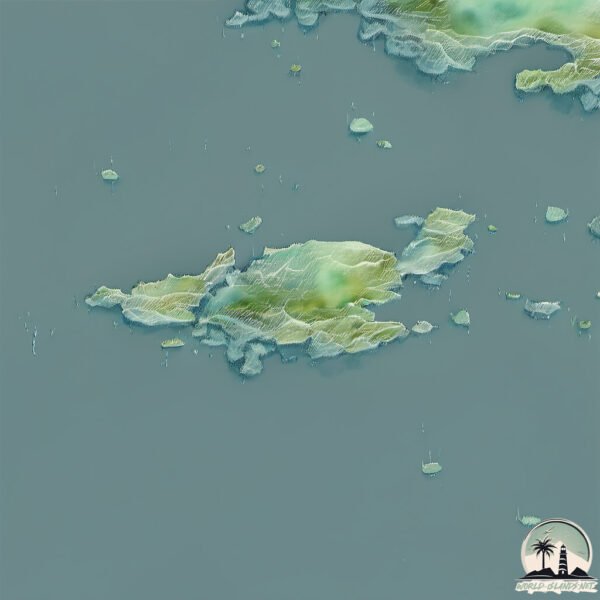Welcome to Cape Hope , a Continental island in the Hudson Bay, part of the majestic Arctic Ocean. This guide offers a comprehensive overview of what makes Cape Hope unique – from its geography and climate to its population, infrastructure, and beyond. Dive into the details:
Geography and size of Cape Hope
Size: 24.8 km²Coastline: 60.8 kmOcean: Arctic OceanSea: Hudson BayContinent: North America
Cape Hope is a Medium Island spanning 25 km² with a coastline of 61 km.
Archipel: –
Tectonic Plate: North America – Covers North America and parts of the Atlantic and Arctic Oceans, characterized by diverse geological features and varying levels of seismic activity.
The geographic heart of the island is pinpointed at these coordinates:
Climate and weather of Cape Hope
Climate Zone: ContinentalClimate Details: Dry-Summer Subarctic ClimateTemperature: Cold Summer
Climate Characteristics: Short, mild summers with significantly less moisture, and prolonged cold periods. Found in northern, inland regions.
Topography and nature of Cape Hope
Timezone: UTC-05:00Timezone places: America/New_YorkMax. Elevation: 70 m Mean Elevation: 21 mVegetation: Open WoodlandTree Coverage: 78%
The mean elevation is 21 m. The highest elevation on the island reaches approximately 70 meters above sea level. The island is characterized by Plains: Flat, low-lying lands characterized by a maximum elevation of up to 200 meters. On islands, plains are typically coastal lowlands or central flat areas.
Dominating Vegetation: Open Woodland
Vegetation: 8 vegetation zones – Very Highly Diverse Island
Infrastructure and Travelling to Cape Hope
Does the island have a public airport? no .
Does the island have a major port? no .
The mean population of Cape Hope is 0 per km². Cape Hope is Uninhabited. The island belongs to Canada .
Continuing your journey, Trodely Island is the next notable island, situated merely km away.
The Most Dangerous Sea Route on the Planet. Past Cape Horn through the Drake Passage!
Cape Horn, “Devil's Mouth,” “Ship Graveyard,” “Old Ogre” - this is what sailors and travelers have been calling Cape Horn for ...
The Most Dangerous Sea Route on the Planet. Past Cape Horn through the Drake Passage!
Cape Horn, “Devil's Mouth,” “Ship Graveyard,” “Old Ogre” - this is ...
Cape Horn, “Devil's Mouth,” “Ship Graveyard,” “Old Ogre” - this is what sailors and travelers have been calling Cape Horn for ...
Instagram vs reality - South Africa edition! (Cape of good hope - look at this photo op line)
capeofgoodhope #southafrica #africa #tourism #africa #southernafrica ...
capeofgoodhope #southafrica #africa #tourism #africa #southernafrica #travelfail #funnymoments #longline #instagramvsreality ...
Why they call it the Cape of Good Hope?
The Cape of Good Hope is southermost point on the African continent ...
The Cape of Good Hope is southermost point on the African continent But why they called it that? The story of the Portuguese ...
Canada is classified as Developed region: G7: Group of Seven – Major advanced economies, including Canada, France, Germany, Italy, Japan, the United Kingdom, and the United States. The level of income is High income: OECD.
News – Latest Updates and Headlines from Cape Hope
Stay informed with the most recent news and important headlines from Cape Hope. Here’s a roundup of the latest developments.
Loading...
Please note: The data used here has been primarily extracted from satellite readings. Deviations from exact values may occur, particularly regarding the height of elevations and population density. Land area and coastline measurements refer to average values at mean high tide.

